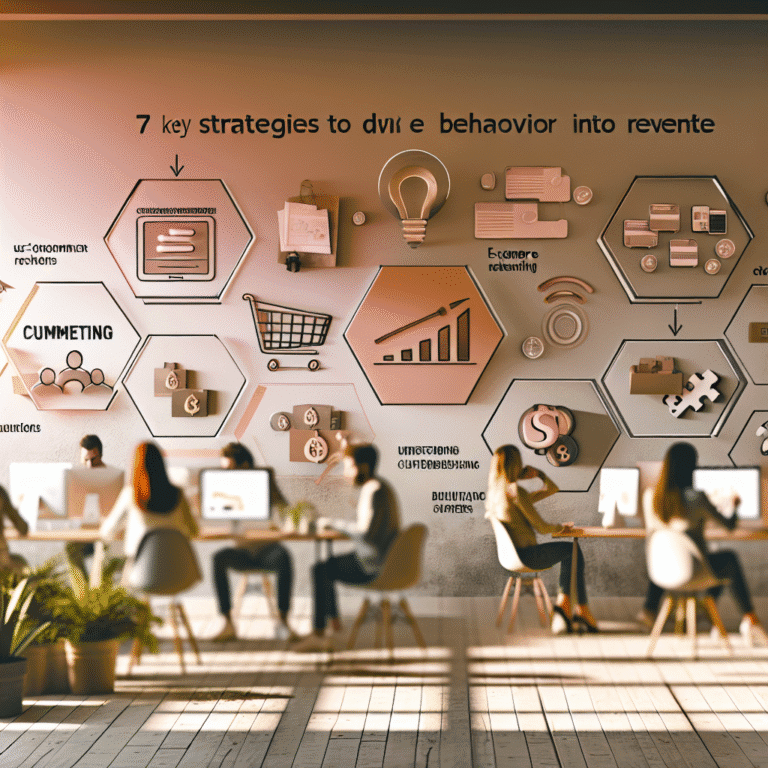Smart Moves to Boost Ecommerce Sales
In today’s ecommerce world, outsmarting your rivals beats outspending them. With algorithms that love to change like British weather and the cost of online ads rising faster than a loaf of bread, simply throwing more money at ads is like giving chocolates to strangers and hoping for marriage. Growth nowadays is all about the subtle art of listening and using customer data wisely.
The good news? You’re sitting on a treasure trove of information already. The trick is learning how to use it to spot patterns that can boost repeat buys, bigger orders, and loyal customers. Here are five cheeky tactics powered by behavioural psychology that can help you drive sales without blowing your budget on ads.
Find Your Golden Geese with First-Party Data
Now, if you’re treating every customer like they’re cut from the same cloth, you may be missing the golden geese in your flock. Often, it’s a small group, maybe 10-20%, who bring in the big bucks. But many businesses make the mistake of chasing after new buyers with discounts rather than looking after their best customers.
Here’s what you can do to dig into your data:
- Group customers by how often they buy, how much they spend, and what they’re into
- Do an RFM analysis (Recency, Frequency, Monetary) to find your VIPs
- Check where your best customers are coming from
- Study their habits: Are they late-night shoppers on their phones? Do they prefer texts over emails? Do they splurge during seasonal sales?
An outdoor gear brand noticed those who bought twice in 90 days were much more likely to keep coming back if they got early access to new gear. Rather than sending blanket promo emails, they crafted campaigns targeting specific segments.
So get started with tools like GA4 segments, Klaviyo, or even a trusty Excel .csv. A sharp eye for patterns always beats guesswork.
Fix Product Pages by Watching Real Users
Clicks are great, but what happens after that? If visitors land on confusing product pages, they’ll bounce like frogs. Good ecommerce SEO handles the introduction, but keeping people around requires understanding their behaviour.
Start by asking, “Where do users usually give up?” rather than “Why aren’t we selling more?”
Look at this:
- Heatmaps: Do people scroll straight to the reviews?
- Scroll depth: Are they sticking around to see the third image, or getting bogged down by text?
- Checkpoints: Are size guides over-clicked yet underused?
Quick, clever fixes:
- Adapt descriptions using words from customer reviews
- Experiment with button positions—no rule says “Add to Cart” should always be front and centre
- Bring reviews and return policies nearer to key spots like pricing
Your product page may not need a full makeover. It just needs a bit more empathy in the design.
Give free tools like Hotjar, Microsoft Clarity, and Google Optimize a whirl to see what visitors really do, not just what you assume they do.
Turn Onsite Visitors into Buyers
Every site visitor comes with a unique agenda. Why, then, do many businesses show them all the same content? Time to get personal.
Here’s how to make it feel like you’ve rolled out the red carpet just for them:
- Show return visitors their saved items or past views
- Tailor the homepage based on where people are coming from—TikTok fans may prefer a different vibe than Google Shopping users
- Suggest products that suit local weather and their location
- Prompt nudges at just the right time—a pop-up about glowing reviews when someone’s been eyeing a product too long
A furniture brand lifted sales by 21% just by adjusting their homepage for different devices and traffic sources. Sometimes what seems like friction is just a misfit.
Tools like Nosto, Dynamic Yield, or Rebuy are great for this, and they even play nice with Shopify and friends.
Find What Works with Cohort Analysis
Forget averages. They don’t just confuse—they can lead you astray. In ecommerce, it's vital to know how various customer groups behave over time. Not all new customers are equal, you know.
What’s this analysis going to show you?
- Who’s likely to make two or three purchases, and who vanishes after getting their first delivery?
- Are your holiday sale shoppers just seasonal mirages?
- Did that influencer you hired attract real fans or one-time spenders?
A homeware shop in the UK found out that their Black Friday shoppers rarely returned, making them unprofitable by month two. October email leads, however, had a third coming back in two months. They shifted their focus and ramped up on timely campaign efforts.
Consider these steps:
- Use GA4’s cohort tools—they’re a bit clunky but have potential
- Export Shopify customer data, organise it by where they came from
- Link your marketing spend with how much value these cohorts bring over time
Ecommerce growth isn’t about flashy one-hit wonders. It’s about those steady, accumulating effects.
Price by Behaviour, Not Guesswork
You’re not just pricing products for what they cost—it’s about how they feel.
In the world of online shopping, the perception of price can be just as important as the actual number. £49.99 doesn’t quite sting like £50, does it? And bundles can scream 'value'—until they don’t.
Test some of these:
- Try charm pricing against more straightforward options and see where social proof takes you
- Use price anchoring, like placing a mid-range product next to a pricier one, to make the first seem better value
- Offer add-ons after purchase, which often catches more buyers than in-cart offers
- Frame "Tracked Delivery" with a little peace of mind for a small fee—and watch those conversions rise
- Switch up "20% off" against "Free refill every third order" for subscriptions
A supplement company nudged up their prices by 8% once and conversions actually grew. Buyers saw it as a quality upgrade, not a budget-buster. Remember, your customers aren’t calculators. They're driven by both price and value.
Fast track pricing tweaks with VWO, Convert, or Shopify’s A/B functions.
Final Thoughts
Many folks think more marketing means more business, but that’s not quite right. What really drives growth is understanding your customers—their motives, their hesitations, the little things that turn clicks into a faithful following.
Dive into these five straightforward strategies. Each offers a nifty edge that makes the difference if you approach it right.
Forget guesswork. Embrace those daunting spreadsheets. Test behaviours like you’re a curious scientist, not just someone with an ad campaign. Remember, it’s often less about bringing in more traffic and more about making the most of the visitors you've already got.





